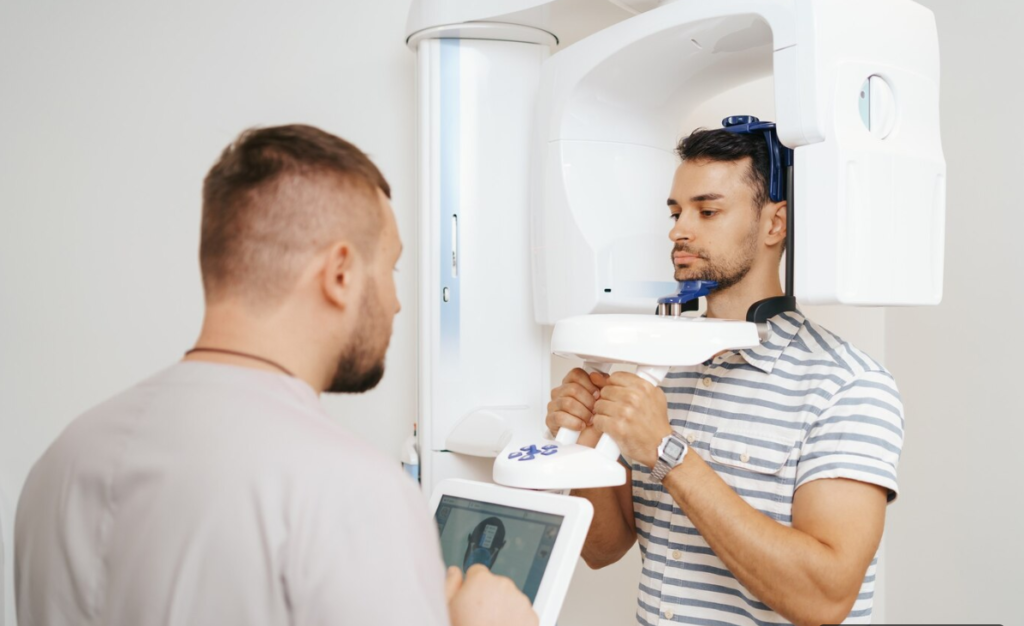Dental radiology is an essential component of modern dentistry, providing valuable insights into the health of your teeth, gums, and jaw. With the help of advanced imaging technology, dental radiology services have revolutionized how dental professionals diagnose, plan treatments, and monitor oral health. Whether you’re visiting your dentist for a routine check-up or requiring specialized care, understanding the various types of dental imaging techniques can help you feel more informed about your treatment options.
1. Traditional Dental X-rays
Traditional dental X-rays are the most common and widely used form of dental imaging. These X-rays use low levels of radiation to create detailed images of your teeth and surrounding structures. They are essential for diagnosing cavities, gum disease, bone loss, and infections. Typically, your dentist will recommend a series of X-rays during regular visits to monitor your oral health over time.
Key Features:
-
Commonly used for routine check-ups and cavity detection
-
Quick and relatively inexpensive
-
Requires minimal radiation exposure
2. Digital Dental X-rays
An upgraded version of traditional X-rays, digital dental X-rays are becoming increasingly popular in dental practices. These modern imaging techniques offer faster results and significantly reduce radiation exposure. Digital X-rays provide high-resolution images that can be instantly viewed on a computer screen, allowing your dentist to diagnose and discuss the results with you on the spot.
Key Features:
-
Faster and more efficient than traditional X-rays
-
Reduced radiation exposure
-
High-quality images that are easy to share electronically
3. Cone Beam Computed Tomography (CBCT)
Cone Beam CT (CBCT) is an advanced form of dental radiology services that provides 3D images of your teeth, soft tissues, nerve paths, and bone structure. This is particularly useful for complex procedures like dental implants, orthodontic treatments, and the assessment of jaw problems. The 3D images allow for precise planning and diagnosis, making it easier for dentists to provide the best possible care.
Key Features:
-
Provides detailed 3D images for more accurate diagnosis
-
Often used for implant planning, orthodontics, and complex cases
-
Allows for better visualization of the bones and tissues
4. Panoramic X-rays
A panoramic X-ray provides a broad view of the teeth, jaw, and surrounding structures in a single image. This type of imaging is often used to assess the overall health of the mouth, including impacted teeth, bone loss, and jaw issues. Panoramic X-rays are frequently used for planning treatments like braces, tooth extractions, and implants.
Key Features:
-
Offers a wide view of the entire mouth and jaw
-
Useful for detecting tumors, cysts, and bone abnormalities
-
Quick and easy to perform
5. Intraoral Cameras
While not technically an X-ray, intraoral cameras are a form of dental imaging used to capture detailed images of the inside of your mouth. These small, camera-equipped devices allow your dentist to examine areas that may be difficult to view with traditional X-rays. Intraoral cameras are helpful for showing patients their condition and enhancing communication during dental visits.
Key Features:
-
Provides high-definition images of the teeth and gums
-
Ideal for patient education and visualizing dental issues
-
Non-invasive and easy to use
Why Are Dental Radiology Services Important?
Dental radiology services are indispensable for accurate diagnosis and effective treatment planning. These imaging techniques allow your dentist to:
-
Detect cavities, fractures, and infections that aren’t visible to the naked eye
-
Plan treatments for dental implants, crowns, and bridges
-
Monitor the progress of orthodontic treatment
-
Assess bone health and detect early signs of gum disease
When you choose a dental clinic that offers advanced dental radiology services, you’re ensuring that your dental care is based on precise, detailed images that help guide your treatment decisions.
Conclusion
Understanding the different types of dental radiology services can help you feel more comfortable when it’s time for your next visit. Whether you’re having a routine check-up or preparing for a more complex procedure, knowing the benefits and uses of each imaging technique can provide reassurance. Your dentist will recommend the best type of radiology for your needs, ensuring accurate diagnosis and treatment planning.
If you’re looking for advanced dental radiology services, visit our clinic today to experience the latest in dental imaging technology!



